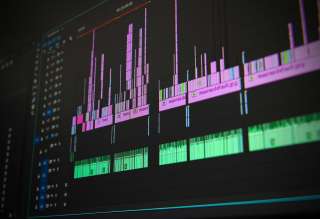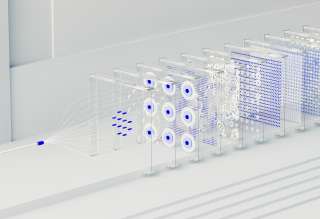Interdisciplinarity: The Clear Path Forward
Top Reasons to Join SPS Today!
1. IEEE Signal Processing Magazine
2. Signal Processing Digital Library*
3. Inside Signal Processing Newsletter
4. SPS Resource Center
5. Career advancement & recognition
6. Discounts on conferences and publications
7. Professional networking
8. Communities for students, young professionals, and women
9. Volunteer opportunities
10. Coming soon! PDH/CEU credits
Click here to learn more.
Interdisciplinarity: The Clear Path Forward
We opened the year with the theme of “embracing interdisciplinarity,” emphasizing the fact that signal processing naturally builds bridges across different domains and disciplines. The front cover image of an organic bridge across mature trees giving birth to a sapling helped convey our message. After two special issues (two parts of one special issue), we come back to you with an issue comprised of feature articles and columns, which all reinforce the message in our first issue of 2024. And as our cover image this time, we selected a painting titled “Souffle” (Breath) by Paris-based artist Isabelle Augé, which was part of her latest exhibit. Truly embracing interdisciplinarity and being open to communication with other disciplines—despite the many challenges this presents [1]—will make signal processing even more relevant by addressing the “grand challenges” of today, many of which involve making intelligent inferences from typically large and heterogeneous data. That is our clear path forward, which we communicate with a bright path framed by young trees on our fourth cover.
Our first article is a perspectives column [A1] in which Xiu makes the case for a paradigm shift in electronics where the space-centric view is replaced with one that establishes a balance between the main considerations of both space and time. Starting with a multifaceted review of the semiconductor industry, from basic scientific aspects to manufacturing and marketing, Xiu notes that it is time to make use of an underutilized resource in electronics, i.e., “it is the right time to make use of time.”
The three feature articles that follow all demonstrate the importance of cross-fertilization across domains. In “Socially Intelligent Networks” [A2], Bordignon et al. study opinion formation and decision making over graphs and their dynamic evolution through interactions with the environment, which has a broad set of applications, including social networks, robotic swarms exploring a geographic region, networks of devices exchanging data over the Internet of Things, and edge computing, among many others. The article explores the convergence of tools and concepts across disciplines to address the challenges for the construction of socially intelligent networks that can guarantee reliable learning performance under today’s demanding conditions where one is confronted with nonstationary, heterogeneous, and uncertain environments. “Deep Internal Learning” [A3] provides a bridge between traditional signal processing tools and modern deep learning such that effective inferences can be made by training on a given input example. Finally, “Future of Bionic Limbs” [A4] explores the possibility of using bionic limbs for remote interactions and interventions following the advances in wireless connectivity and cloud/edge computing.
SPS Social Media
- IEEE SPS Facebook Page https://www.facebook.com/ieeeSPS
- IEEE SPS X Page https://x.com/IEEEsps
- IEEE SPS Instagram Page https://www.instagram.com/ieeesps/?hl=en
- IEEE SPS LinkedIn Page https://www.linkedin.com/company/ieeesps/
- IEEE SPS YouTube Channel https://www.youtube.com/ieeeSPS














